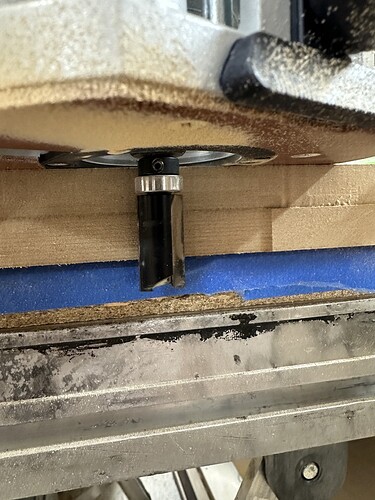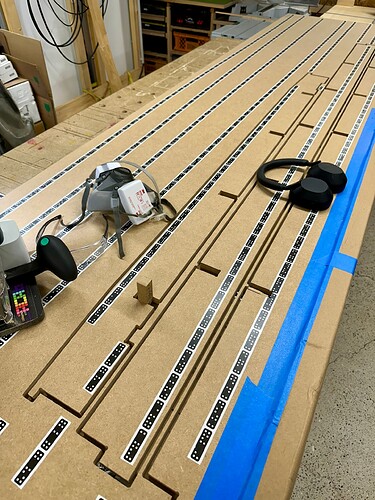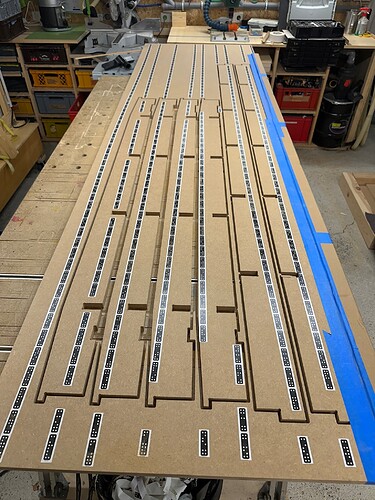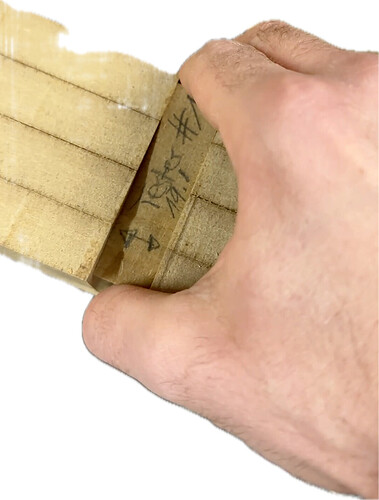Today I started with the first slab of 19mm MDF to cut 4 of 4 Y Ribs and 4 of 7 X Ribs for the torsion box. The parts came out incredibly precise and I tested each joint with a cut off and adjusted the cut-offsets on-tool to achieve perfect friction fit. I did make a video, but I need to make an account first and share it tomorrow.
I must say, Dougs LowRider Table design file is awesome! It has reacted well to my adaptions of plate thicknesses within reason (at certain combinations things break inevitably with Fusion, it NEVER works ![]() ) and put in my table size and it all exported flawlessly onto my tool. It’s a great addition integral to my build and I do not need to worry at all about figuring this out by myself yet also have a super-sturdy finished product in exactly my size in the end (I think).
) and put in my table size and it all exported flawlessly onto my tool. It’s a great addition integral to my build and I do not need to worry at all about figuring this out by myself yet also have a super-sturdy finished product in exactly my size in the end (I think). ![]()
One question: the torsion box is made of the interlocking joints and the bottom and top sheet. The joints do not neccesarily require glue I’d presume? But the sheets are glued? Please advise ![]()
Meanwhile enjoy some more pictures. Since tomorrow there’s no workshop time I will continue with the assembly of other parts. I’ll use the one small cut off next to the X Ribs for the Plates on Monday and maybe can also cut the remaining 3 X Ribs. Then the table can be assembled tuesday ![]()
While I must say that the precision and cut quality are excellent with the Shaper, with every pass I notice just how my I will love the Low Rider for taking exactly these repetitive cuts of me. They are boring and I feel myself get impatient…
Have a nice weekend!
The parts go together incredibly smooth with little friction, yet lockdown in place so hard that I reacted really impressed since it was SO much more sturdy than I intuitively estimated ![]()
![]()
I’m noticed that I can probably put the torsion pieces together exactly one time, I will add makers for orientation first thing tomorrow…



